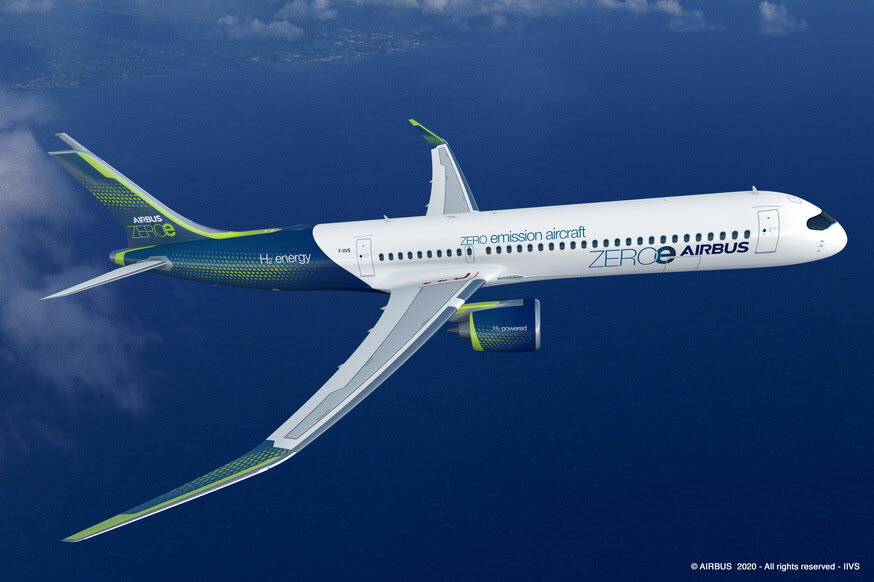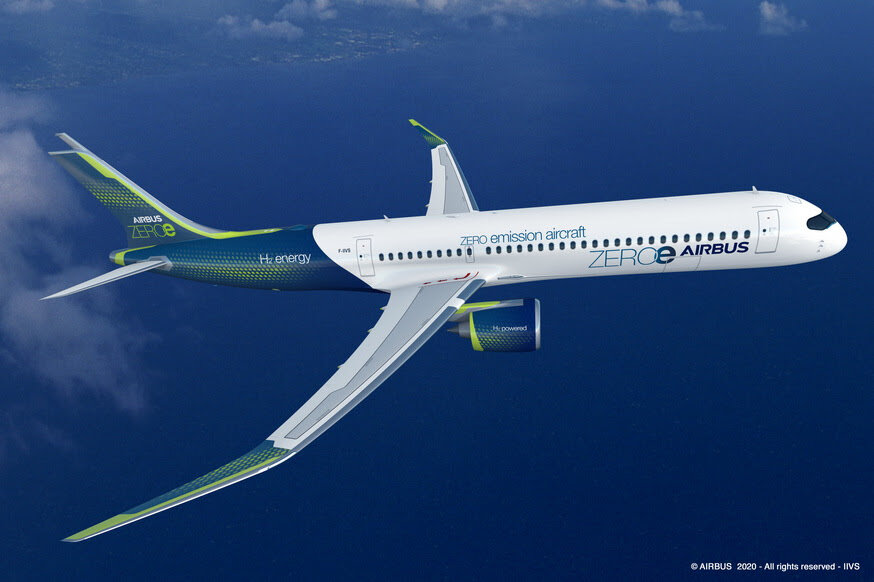Airbus presents trio of hydrogen-powered aircraft concepts
It was all over the place today, since early in the morning - Toulouse time - when Airbus has called a live video conference.
The European aircraft manufacturer has unveiled three new hydrogen-powered aircraft concepts it is working on: a 100-120 pax turbofan model, a turboprop and a futuristic blended-wing body for up to 200 passengers. All three of them are part of an initiative called “ZEROe”.
Slowly, but surely, hydrogen is emerging as a favourite in the race to develop carbon-free (well, let’s say “low carbon” since the process is unlikely to be entirely carbon free) airliner of a significant size.
Listeners of The Allplane Podcast already got some deep insights into the possibilities of hydrogen for aircraft propulsion last May, in the #4 episode of the pod, where Swedish aerospace engineer Bjorn Fehrm explained the principles that this solution is based on and how some (unnamed) OEMs were already working in this direction.
Around the same time came other news that all point in the same direction. In April startup ZeroAvia got an investment from aerospace fund and accelerator Starburst and, in August, emerged from stealth mode with the unveiling of a modified Piper aircraft carrying its hydrogen powertrain technology.
Also in August, Paul Eremenko, former director of Airbus’ Silicon Valley innovation arm, presented his startup, Universal Hydrogen, that aims to convert the existing global turboprop fleet to hydrogen propulsion. Besides the actual hardware modification, Universal Hydrogen aims to overcome the current lack of hydrogen distribution infrastructure with an innovative system to supply pre-packaged fuel modules.
Hydrogen has some advantages, not least of them the fact that energy density of current electric batteries is problematic when it comes to powering anything larger and with a longer range than small commuter aircraft. And, yet, it is not without drawback, for example, as it has been clearly explained at Airbus’ conference today, it takes 4 times as much space as the equivalent (per energy stored) amount of kerosene.
Take, for example, the turbofan concept presented today, you will see that a significant portion of the fuselage (towards the rear) doesn’t have windows, and this is because that space is dedicated to storing liquid hydrogen (which, by the way, is flammable too). And this will get about 100 passengers to about 2,000nm. There’s clearly room for improvement here. But also, Rome wasn’t made in one day.
The three concepts unveiled today have a long way ahead if they are to become a tangible reality, but they seem to be onto something.
Find more stories about green aviation and environmentally friendly flying here…



